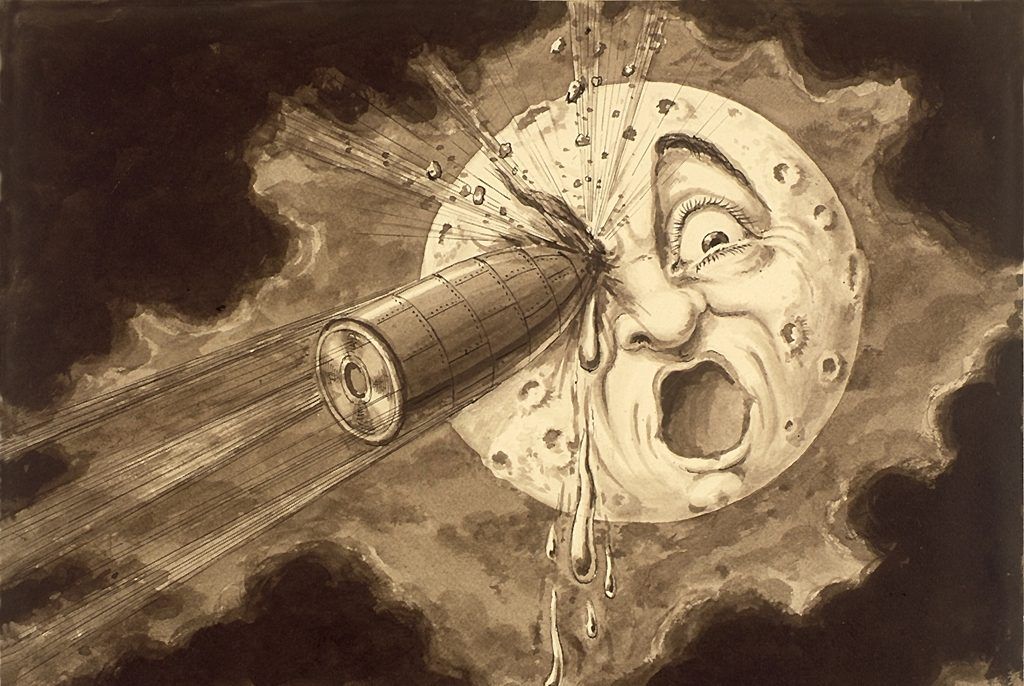Things you shouldn’t nuke
By Thomas Gaulkin | August 27, 2019

Donald Trump’s interest in dropping nuclear bombs into hurricanes, reported by Axios this week, is hard to fathom. (Even, apparently, for Donald Trump.) Setting aside that even the most powerful nuclear weapons ever tested likely lack the energy to disrupt a hurricane (according to the US government’s own hurricane experts), releasing radioactive fallout into a storm headed toward land seems pretty unwise.
But the tornadic US president is not the first to propose the concept. In fact, as Garret Graff explains at Wired, nuclear explosions were considered for a variety of non-combat purposes throughout the Cold War, from melting the polar ice-caps to nuking the moon. The US Atomic Energy Commission launched Project Plowshare in 1958 to pursue peaceful applications of the technology. Some proposed uses of nuclear blasts: harbor, canal, and dam construction; fracking; railroad cuts; sewage disposal; and even generating steam for geothermal power. The Plowshare program produced some three dozen explosive experiments, but none led to feasible applications.
Not to be outdone, the Soviet Union ran its own effort to turn nukes into mining equipment, and detonated hundreds of devices through the late 1980s. Many were focused on obtaining seismic data. Many of the Soviet explosions were intended to generate seismic data, but some focused on natural gas exploration and other mining operations—including a 200-300 kiloton explosion at an eastern Ukrainian coal mine in 1979 that has been irradiating the region’s water ever since.
The 1996 Comprehensive Nuclear-Test-Ban Treaty prohibits every signatory state from carrying out “any nuclear weapon test explosion or any other nuclear explosion,” including those for peaceful purposes. But with the demise of the INF treaty, the impending collapse of New START—one of the last pillars of the arms control regime—and the start of a new arms race, will nuclear states get comfortable again nuking stuff for profit?
Here are links to details on a few other proposed uses for nuclear bombs that should still generally be considered bad ideas, since nuclear bombs remain a horribly destructive force that threatens human civilization.
Atomic cork? The Soviet Union reportedly capped natural gas wells with nuclear detonations a few times, and Barack Obama’s administration supposedly considered that course briefly as a speedy way to plug the Deepwater Horizon spill in 2010.
A man, a bomb, a canal… The Atomic Energy Commission thought it would be prudent to carve a backup Panama Canal using a long chain of nuclear blasts.
Nuked Alaska. In the early 1960s, Manhattan Project scientist Ed Teller worked eagerly on using a nuclear explosion to create an artificial harbor at Cape Thompson, along Alaska’s northwest coast. Radioactive experiments in anticipation of the (abandoned) plan to detonate a 200 kiloton device were only revealed in the 1990s, and cleanup of the contamination concluded just a few years ago.
Glass desert highway. Project Carryall would have been spectacular. The idea was to carve a new path for the Santa Fe Railway Company and an adjacent public roadway through the Bristol Mountains in California’s Mojave desert—by simultaneously detonating 22 nuclear devices, each with varying yields of up to 200 kilotons, along a two-mile stretch of California’s Mojave desert. If it had proceeded, who knows what interesting flora would line the Interstate Highway System today…
Shoot the Moon. In the late 1950s, the space race was just beginning, and the Soviet Union had a good head start with the launch of Sputnik. In 1958, the US Air Force decided one way to establish supremacy might be to send a nuclear device to the moon and blow it up, so everyone on Earth, especially the Russians, could see it. Thankfully that plan was scrapped, NASA figured out how to put humans there instead, and in 1967 the Outer Space Treaty banned nuclear weapons in space.
Asteroids. Compared to all of these brilliant ideas, taking out an asteroid with nuclear bombs sounds almost reasonable, and there are active efforts to design a system to do that in case a planetary killer heads our way. But some recent studies have shown that blowing up an asteroid could be largely ineffective, like turning a giant space rock into a gravitationally glued blob of thousands of smaller space rocks. The good news is the likelihood of something hitting Earth anytime soon remains low, so we have plenty of time to figure out another way to protect ourselves—as long as we don’t blow ourselves up first.
Publication Name: Wired
To read what we're reading, click here
Together, we make the world safer.
The Bulletin elevates expert voices above the noise. But as an independent nonprofit organization, our operations depend on the support of readers like you. Help us continue to deliver quality journalism that holds leaders accountable. Your support of our work at any level is important. In return, we promise our coverage will be understandable, influential, vigilant, solution-oriented, and fair-minded. Together we can make a difference.
Topics: Nuclear Risk, Nuclear Weapons, What We’re Reading














